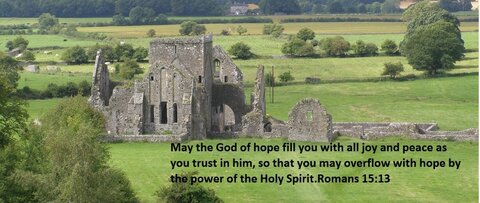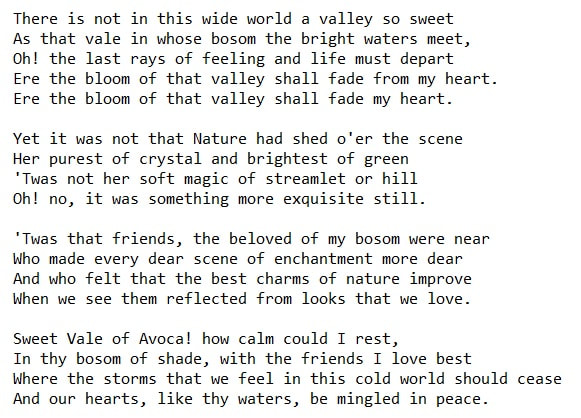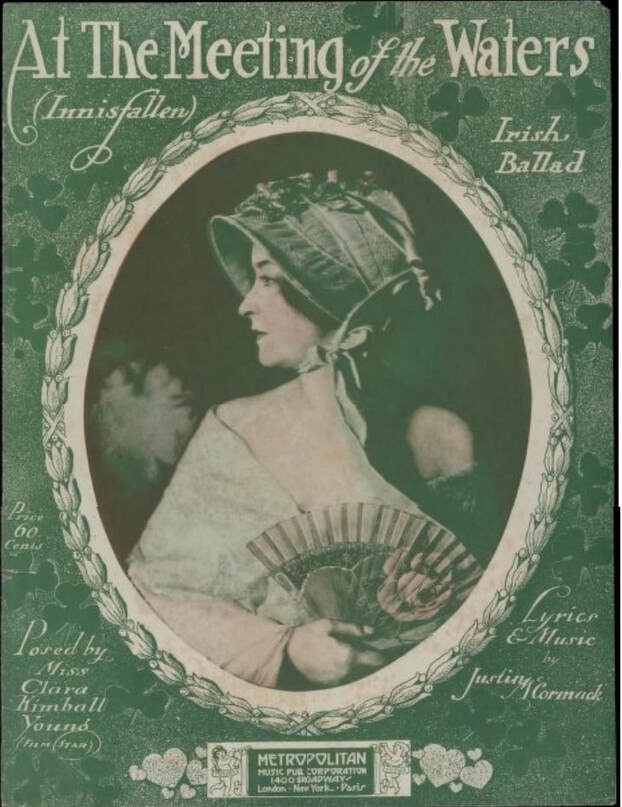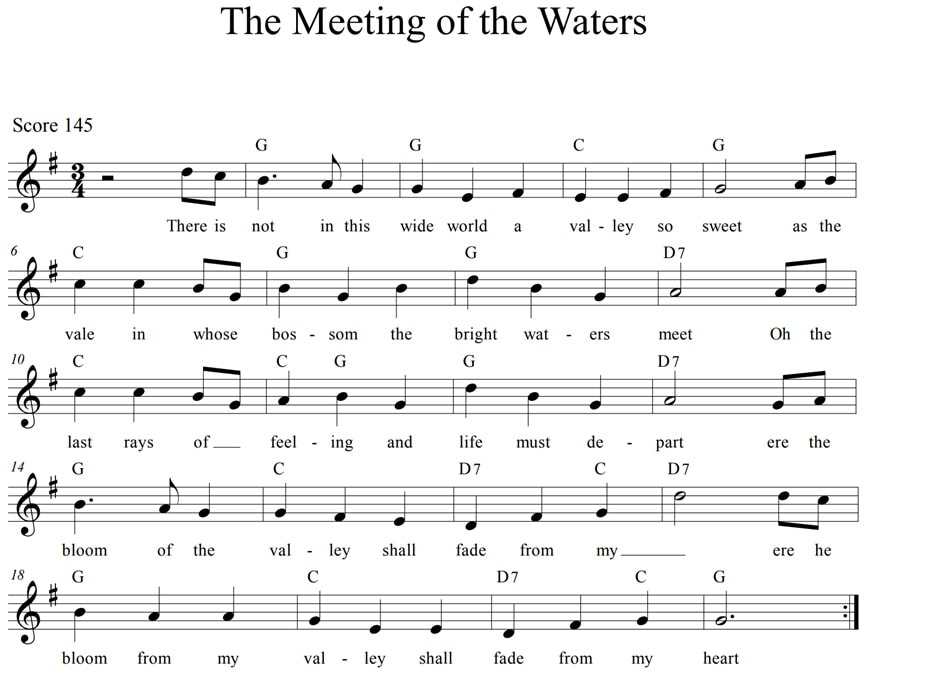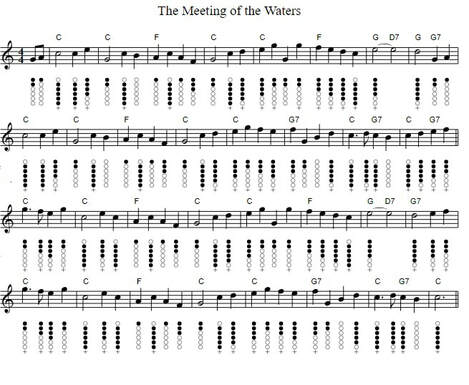The Meeting Of The Waters lyrics and chords
The Meeting Of The Waters Song Lyrics With Easy Guitar Chords And Sheet Music. Music written by Thomas Moore. A song from Co. Wicklow Ireland about where two rivers meet ''The Avoca'' and ''The Avonmore'' . Guitar chords are in chordpro. Recorded by John McCormack, Maureen Hegarty and Tommy Fleming who also sings another folk song called The Cliffs Of Dooneen Song. The tin whistle sheet music in C Major is included.
[D]There is not in this[G] wide world a[A7] valley so[D] sweet
As that[G] vale in whose[D] bosom the bright waters[A7] meet,
Oh! the[G] last rays of fee[D]ling and life must de[A7]part
Ere the[D] bloom of that[G] valley shall[A7] fade from[G] my[A7] heart.
Ere the[D] bloom of that[G] valley shall[A7] fade [G] my[D] heart.
Yet it was not that Nature had shed o'er the scene
Her purest of crystal and brightest of green
'Twas not her soft magic of streamlet or hill
Oh! no, it was something more exquisite still.
'Twas that friends, the beloved of my bosom were near
Who made every dear scene of enchantment more dear
And who felt that the best charms of nature improve
When we see them reflected from looks that we love.
Sweet Vale of Avoca! how calm could I rest,
In thy bosom of shade, with the friends I love best
Where the storms that we feel in this cold world should cease
And our hearts, like thy waters, be mingled in peace.
As that[G] vale in whose[D] bosom the bright waters[A7] meet,
Oh! the[G] last rays of fee[D]ling and life must de[A7]part
Ere the[D] bloom of that[G] valley shall[A7] fade from[G] my[A7] heart.
Ere the[D] bloom of that[G] valley shall[A7] fade [G] my[D] heart.
Yet it was not that Nature had shed o'er the scene
Her purest of crystal and brightest of green
'Twas not her soft magic of streamlet or hill
Oh! no, it was something more exquisite still.
'Twas that friends, the beloved of my bosom were near
Who made every dear scene of enchantment more dear
And who felt that the best charms of nature improve
When we see them reflected from looks that we love.
Sweet Vale of Avoca! how calm could I rest,
In thy bosom of shade, with the friends I love best
Where the storms that we feel in this cold world should cease
And our hearts, like thy waters, be mingled in peace.
Here's another set of easy guitar chords in the key of G
[G]There is not in this[C] wide world a[D7] valley so[G] sweet
As that[C] vale in whose[G] bosom the bright waters[D7] meet,
Oh! the[C] last rays of fee[G]ling and life must de[D7]part
Ere the[G] bloom of that[C] valley shall[D7] fade from[C] my[D7] heart.
Ere the[G] bloom of that[C] valley shall[D7] fade [C] my[G] heart.
Lyrics And Chords K - M
[G]There is not in this[C] wide world a[D7] valley so[G] sweet
As that[C] vale in whose[G] bosom the bright waters[D7] meet,
Oh! the[C] last rays of fee[G]ling and life must de[D7]part
Ere the[G] bloom of that[C] valley shall[D7] fade from[C] my[D7] heart.
Ere the[G] bloom of that[C] valley shall[D7] fade [C] my[G] heart.
Lyrics And Chords K - M
The Meeting Of The Waters Sheet Music Notes In C Major for tin whistle
